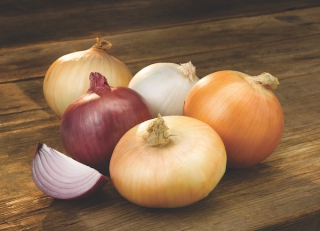
Onions - Layers of Flavor
Tuesday, 01 November 2016 15:32Instructors can use new online onion curriculum to teach students about traits, flavors and best uses of onions.

Instructors can use new online onion curriculum to teach students about traits, flavors and best uses of onions.

Grand Rapids Community College opened Fountain Brewery and Peter’s Pub this semester. It is the only federal- and state-licensed brew pub on a college or university campus.

Not only is honey sweeter than sugar, it also softens baked goods and can extend a product’s shelf life. The National Honey Board’s Keith Seiz finds inspiration from honey.

A fall season favorite - apples – are falling off trees and into kitchen classrooms across the country. Consumers can expect more varieties with great health benefits.

Teach students how butter, buttermilk, cottage cheese, cream, sour cream and yogurt are essential to bakery products’ tastes and textures.